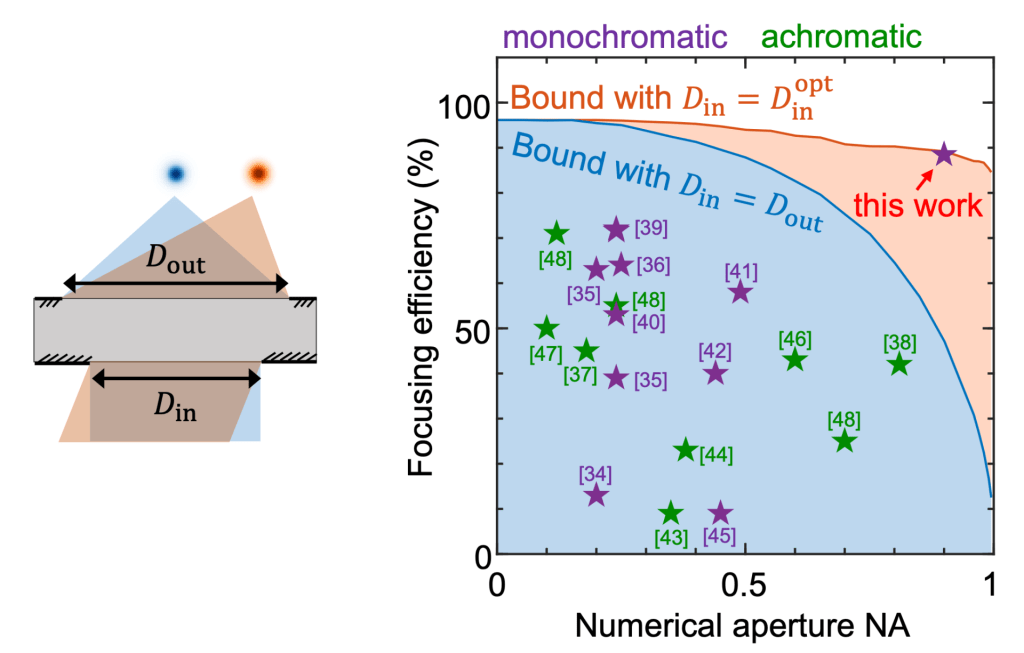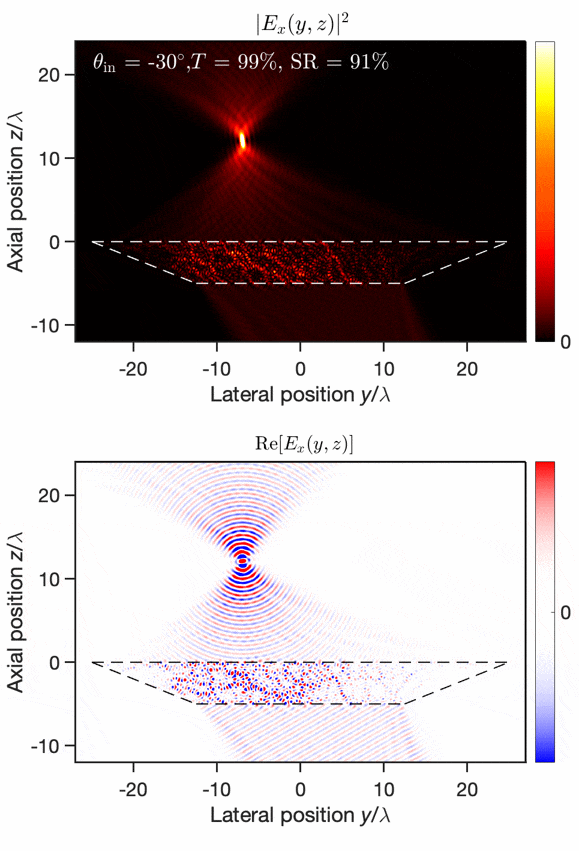Theoretical bounds elucidate the underlying physics and quantify how close the performance of a system approaches fundamental limits. One direction of the Optics in Complex Systems group is finding the ultimate limit of multi-channel systems and the designs that can reach these limits.
The scattering matrix encapsulates the response of multi-channel systems. Once an optical structure’s target function is specified, one can write down the corresponding scattering matrix without having to know the structure itself. We use the rich information in this matrix to derive bounds.
One piece of such information is the degree of nonlocal coupling, which we quantify using how much a localized input spreads laterally when it reaches the output side. Since light must propagate to spread, the amount of lateral spreading puts a bound on the minimal device thickness [1]. This thickness bound generalizes the memory effect in mesoscopic physics and precedes a related bound proposed independently by David Miller.
Another piece of information is the efficiency of transmission. By analyzing the singular values of the transmission matrix, we put a rigorous bound on the maximal channel-averaged transmission efficiency [2].
Beyond setting the limitations of photonic devices, we also introduced a more active way to use theoretical bounds by integrating them into part of the photonic design process. By identifying system parameters that maximize the efficiency bound itself and then performing inverse design, we came up with wide-field-of-view high-numerical-aperture metalens designs with efficiencies greatly surpassing existing records [3].


Related publications
- Thickness bound for nonlocal wide-field-of-view metalenses, Shiyu Li and Chia Wei Hsu. Light: Science & Applications 11, 338 (2022); arXiv:2205.09366.
- Transmission efficiency limit for nonlocal metalenses, Shiyu Li and Chia Wei Hsu. Laser & Photonics Reviews 17, 2300201 (2023).
- High-efficiency high-numerical-aperture metalens designed by maximizing the efficiency limit, Shiyu Li, Ho-Chun Lin, and Chia Wei Hsu. Optica 11, 454–459 (2024).